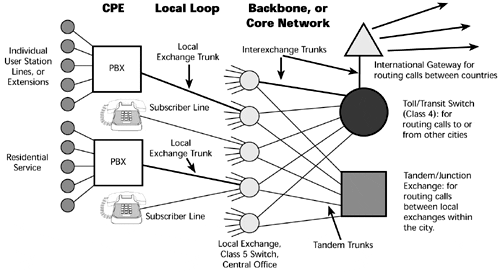Introduction
The Public Switched Telephone Network (PSTN) is a global network of interconnected telephone lines that enables communication between individuals and businesses around the world. In this article, we will discuss how PSTN works.
PSTN Architecture
The PSTN is composed of a complex network of switches, trunk lines, and other infrastructure components that allow telephone calls to be routed from one location to another. The basic architecture of the PSTN consists of two main components: local exchange carriers (LECs) and interexchange carriers (IXCs).

LECs are responsible for connecting individual telephone lines to the PSTN. These lines (a.k.a. Local Exchange Trunks) are typically owned and operated by local telephone companies or regional service providers. When a user makes a call, their telephone line is connected to the nearest LEC, which then routes the call to its destination.
IXCs, on the other hand, are responsible for connecting LECs together, enabling calls to be routed across long distances. IXCs typically own and operate high-speed trunk lines (a.k.a. InterExchange Trunks) that connect major metropolitan areas and regions. When a call is made between two different regions or countries, it is routed through a series of IXCs until it reaches its destination.
PSTN Call Routing
When a user makes a call, their phone sends a signal to the nearest LEC, which then routes the call to the appropriate IXC. The IXC then routes the call to the destination LEC, which connects the call to the recipient’s phone. This process occurs in a matter of seconds, allowing users to communicate with each other in real time.
PSTN Call Quality
The quality of PSTN calls can vary depending on a number of factors, such as the quality of the phone lines, the distance between the two parties, and the number of switches and trunk lines involved in the call. In general, PSTN calls are known for their high level of reliability and call quality, as the infrastructure is well-established and heavily regulated.
Conclusion
In summary, the PSTN is a complex network of switches, trunk lines, and other infrastructure components that enable telephone communication around the world. By understanding how the PSTN works, users can better appreciate the technology that powers their everyday communication, as well as the factors that contribute to call quality and reliability.